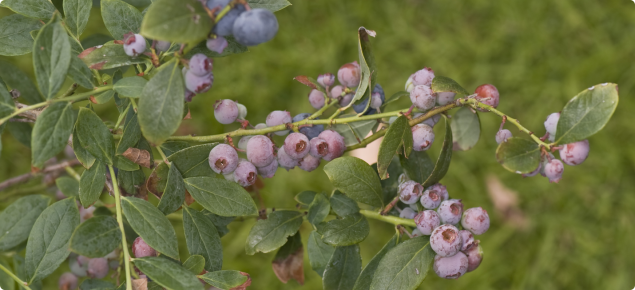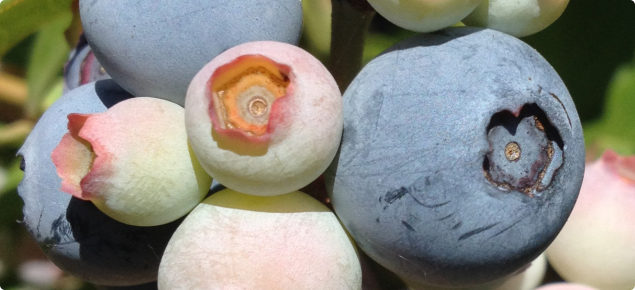Planning a blueberry orchard
Blueberry plants
Blueberry plants are available from commercial nurseries and will have been propagated from hardwood cuttings.
Varieties grown in Australia are classified into Southern Highbush, Rabbiteye and Northern Highbush.
- Southern Highbush varieties (Vaccinium corymbosum hybrid) are low-chill, requiring from 250–600 chilling hours below 7°C to induce flowering. Similar conditions are experienced near Perth. They are frost tender, mainly evergreen and adapted to warmer and drier conditions than Rabbiteye varieties. The best varieties are O’Neal, Sharpeblue and Misty, which are vigorous, early maturing and have large fruit. Biloxi and Legacy are also suitable. These varieties grow 2–3m tall.
- Rabbiteye blueberries (Vaccinium ashei) need 450–600 chilling hours below 7°C to induce flowering and are suited to cool, but frost-free locations. They are generally grown from Perth southwards, including Manjimup and Albany. Varieties include Brightwell, Premier, Powder Blue and Tifblue. Compared with Southern Highbush varieties, the fruit is smaller, darker and later maturing.
- Northern Highbush (Vaccinium corymbosum) varieties need more than 800 chilling hours below 7°C. They are frost tolerant, but due to their high chilling requirement, there are few areas in Western Australia where these varieties can be grown successfully.
Sites and soils
Blueberries grow best in light, well-drained acid soil with a pH of 4.8 to 5.5 (in water). A deep loam or sandy loam with high organic matter is best.
They can also be grown in pots using a high quality potting mix. They require high soil moisture (not waterlogged), but should have at least 450mm of well drained soil above the watertable. This may require mounding 250mm high with some slope to the site to aid drainage, ensuring excess water is diverted away from the plants.
Use of polythene mulch, weed-mat or natural mulch can reduce water loss and weed problems. The whole area may need to be covered with netting to control birds.




